
Roots
Stepping into the hushed chambers of history, where echoes of ancient life linger, we often find ourselves drawn to the visible expressions of identity. Among these, hair stands as a testament to culture, status, and personal care. For the women of ancient Rome, their elaborate hairstyles were not merely fleeting trends; they were architectural marvels, carefully constructed displays of wealth, social standing, and artistic sensibility.
How, then, did these formidable coiffures, often towering and laden with adornments, survive the night’s repose? This quiet query invites us to peel back layers of time, revealing a world where daily rituals held profound meaning, even as the sun dipped below the horizon.
The significance of hair in Roman society cannot be overstated. It served as a powerful visual cue, a silent language communicating a woman’s place within the societal structure. Wealthy women, in particular, displayed their standing through complex styles that demanded hours of attention from enslaved hairdressers, known as Ornatrices.
The more intricate and unnatural the hairstyle, the more it signaled the wearer’s ability to afford such dedicated labor and time. These coiffures were not about comfort or naturalism; they were statements, meticulously sculpted to convey a cultivated presence.
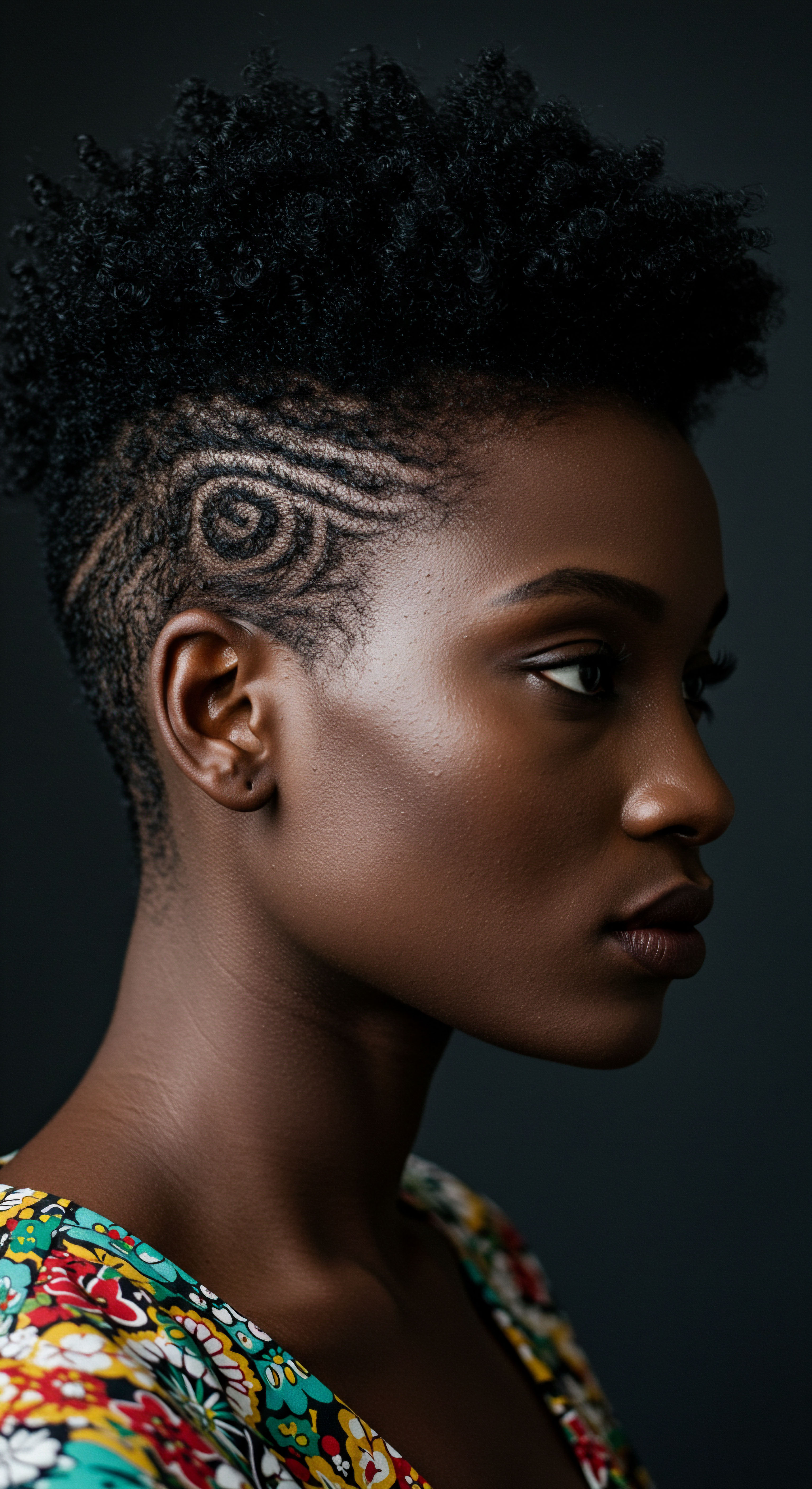
What Did Roman Hairstyles Tell the World?
The coiffures of Roman women were a lexicon unto themselves, speaking volumes without uttering a single word. A woman’s hair communicated her marital status, her age, and her family’s standing. For instance, married women often wore their hair in a style called the Tutulus, a braided and coiled updo symbolizing respectability and virtue, often associated with the goddess Vesta. Unmarried women, by contrast, typically wore their hair down or in simpler arrangements, signifying their youth and readiness for marriage.
The Flavian era, spanning the late first century CE, stands out for its particularly extravagant styles. Women of this period sported elaborate mounds of curls piled high at the front of the head, with the remainder gathered into buns or long braided locks at the back. These visually imposing coiffures, while sometimes drawing criticism from male observers like Juvenal, also allowed women across various social strata to express their financial and social worth.

How Did Hair Reflect Roman Identity and Status?
Beyond simple adornment, hair in ancient Rome was deeply intertwined with personal and collective identity. It was a canvas upon which social roles were painted, a reflection of the prevailing cultural values. The more complex the hairstyle, the higher the woman’s social standing, a direct correlation that made hair a prominent indicator of status.
This societal emphasis meant that hair care was not a trivial pursuit; it was a daily ritual, a necessary investment in maintaining one’s public persona. The presence of specialized tools and dedicated staff speaks to the profound importance placed on these elaborate arrangements.
Roman hairstyles were a complex visual language, communicating a woman’s social standing and identity.
Archaeological findings consistently reveal a range of hair accessories used to achieve and maintain these styles. Hairpins, crafted from materials like bone, ivory, bronze, glass, or precious metals, were essential for securing intricate braids, twists, and buns. These pins were not merely functional; many were decorative, featuring carvings of deities, beads, or pendants.
Hairnets, often finely woven from gold or silk, provided additional support and added a layer of luxury to the coiffure. Even hairpieces and wigs, made from human hair (with black hair from India and blonde hair from Germany being particularly sought after), were commonly used to add volume and height for dramatic effects, or to compensate for thinning hair.
The Roman preoccupation with hair was not unique. Across the ancient world, from Egypt to Greece, hair held significant symbolic value. In ancient Egypt, for example, hair was considered a source of vitality and power, with elaborate rituals and ointments used to prevent loss or graying.
Wigs were widely used, indicating higher status and displaying the power of the elite. This broader context helps us understand the Roman approach, where the body, including hair, was a site for expressing one’s place in the world.
| Accessory Hairpins |
| Material Bone, Ivory, Bronze, Gold, Silver, Glass, Stone |
| Primary Function Securing braids, twists, buns; decorative adornment |
| Accessory Hairnets |
| Material Finely woven gold, Silk |
| Primary Function Containing and supporting complex styles; luxury display |
| Accessory Wigs / Hairpieces |
| Material Human hair (Indian, German) |
| Primary Function Adding volume, height; changing style; concealing hair loss |
| Accessory Vittae |
| Material Woollen fillets, Linen ribbons |
| Primary Function Binding married women's hair; signifying modesty |
| Accessory Calamistrum |
| Material Bronze rod |
| Primary Function Curling hair with heat |
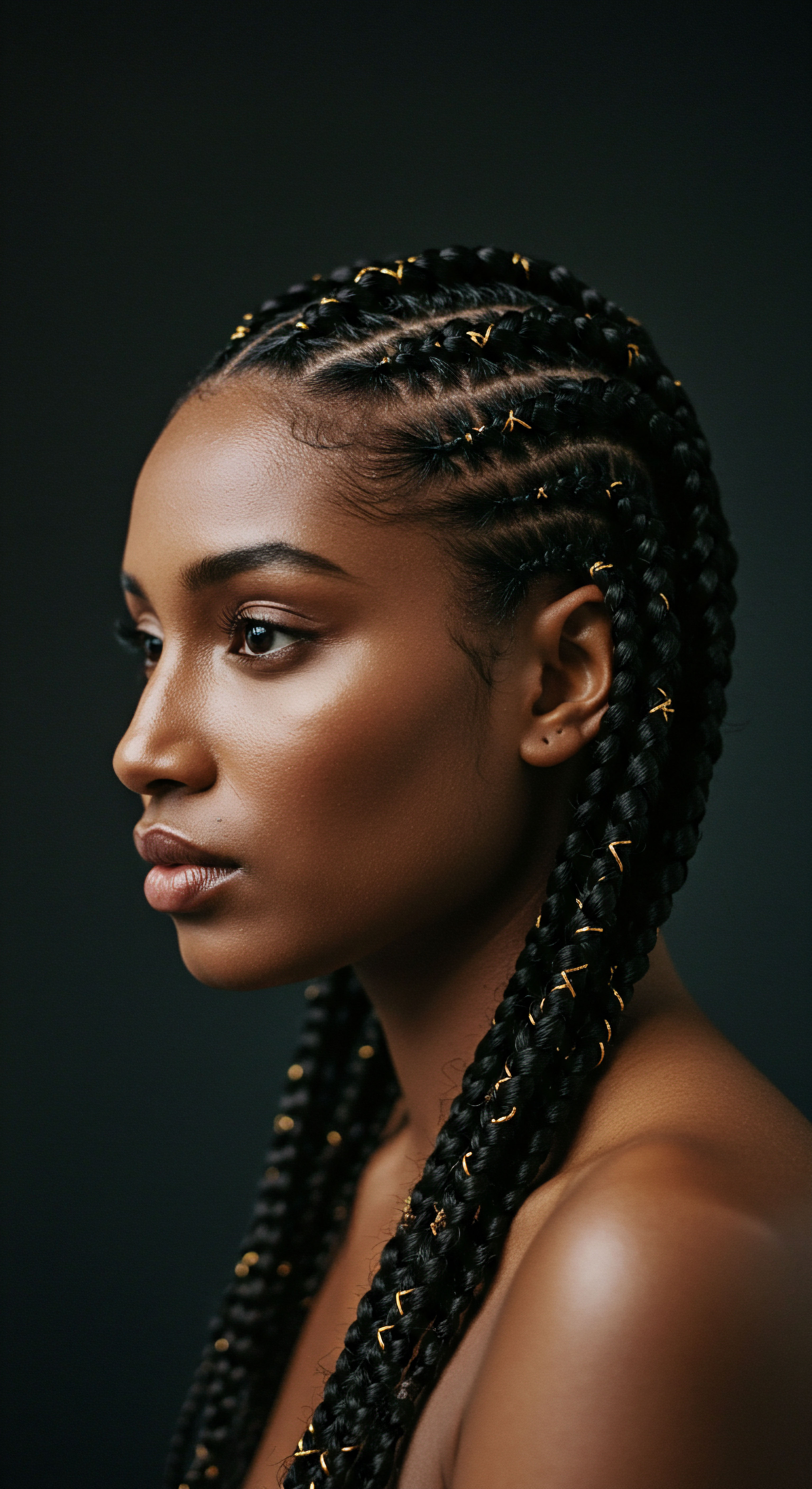
Ritual
As the Roman day drew to a close, and the bustling city lights dimmed, a different kind of daily practice began within the private quarters of a Roman household. The intricate hairstyles, which took hours to construct and symbolized so much, could not simply be undone without consequence. Protecting these coiffures through the night was a practical necessity, a ritual that aimed to preserve the artistry of the day and minimize the labor of the next. This evening care was not merely about maintaining appearance; it was about respecting the time and effort invested, and perhaps, a quiet act of self-preservation in a world where external presentation was paramount.
The methods employed to protect these elaborate styles were ingenious, often drawing upon textiles and simple tools. While direct, explicit accounts detailing nighttime hair protection rituals are not as abundant as descriptions of daytime styling, archaeological findings and literary references provide clues. Roman women used various coverings and gentle techniques to safeguard their coiffures from disarray during sleep. These practices aimed to prevent tangles, preserve curls, and maintain the structural integrity of complex updos, allowing for quicker restyling the following morning.

What Did Roman Women Use to Cover Their Hair at Night?
One of the primary means of nocturnal hair protection involved the use of various head coverings. While specific terms for “sleep bonnets” as we understand them today are scarce, historical accounts and archaeological evidence suggest the use of scarves, nets, and soft cloths. These items would have provided a gentle barrier against friction and movement during sleep, crucial for preserving delicate curls and braids.
- Scarves ❉ Simple lengths of fabric, perhaps linen or fine wool, could be wrapped around the head to secure the hairstyle. This would have provided a soft, breathable layer, preventing hair from rubbing against rough bedding and minimizing frizz.
- Hairnets (Reticula) ❉ These were commonly used during the day to hold hair in place, and it is plausible they were also employed at night. Crafted from various materials, including finely woven gold or silk, they offered a light yet secure enclosure for the hair. A reticula could keep individual curls and sections of a style from coming undone.
- Soft Cloths ❉ Beyond formal scarves or nets, everyday soft cloths, possibly made of cotton or even silk for the very wealthy, might have been used to wrap the hair. The goal was to reduce friction, which is a modern understanding of hair care that aligns with ancient practices of preservation.
The materials chosen would have varied significantly based on social status. A wealthy woman might have had access to fine silk or gold-threaded nets, while a woman of more modest means might have relied on simpler linen or wool cloths. This disparity in resources did not negate the underlying need for protection, but it certainly influenced the quality and aesthetic of the protective measures.

How Did Oils and Balms Play a Role in Nighttime Hair Care?
Beyond physical coverings, Roman women also utilized various oils and balms to condition and perhaps help set their hair. Olive oil was a common staple in ancient Roman beauty routines, used by both men and women to keep hair soft and shiny. It was often infused with herbs like rosemary and lavender, enhancing its properties and adding fragrance. Applying a small amount of oil to the hair before bed could have helped to:
- Reduce Friction ❉ A light coating of oil could have lessened the mechanical stress on hair strands as they moved against pillows or head coverings, thereby reducing breakage and frizz.
- Maintain Moisture ❉ Oils would have provided a protective layer, helping the hair retain moisture overnight, particularly important for curls that tend to lose definition when dry.
- Preserve Style ❉ While not a strong holding agent like modern hairspray, oils could have offered a subtle weight and cohesion to the hair, helping to keep intricate styles from completely unraveling.
Interestingly, some Roman remedies for hair care involved rather unusual ingredients. To prevent graying, some Romans applied a paste made from herbs and earthworms at night. Other concoctions for hair growth included bear grease and crushed myrtle berries.
While these might seem peculiar today, they underscore the dedication to hair maintenance and the experimental approach to beauty practices in the ancient world. The emphasis was on preservation and enhancing the hair’s perceived vitality, even if the methods were unconventional by modern standards.
Roman women used scarves, nets, and oils to preserve their intricate hairstyles overnight, minimizing morning restyling efforts.
The practice of using oils for hair care is not unique to Rome; it was a widespread custom across ancient civilizations. In ancient Egypt, castor oil and almond oil were valued for their moisturizing and protective qualities, often mixed with honey and herbs to create hair masks. This cross-cultural consistency suggests a fundamental understanding of how emollients could benefit hair, even without modern scientific knowledge of hair structure.
| Element Linen/Wool Scarves |
| Possible Application at Night Wrapped around head and hairstyle |
| Benefit for Hair Reduced friction, protected from dust, maintained shape |
| Element Silk/Gold Hairnets |
| Possible Application at Night Secured over coiffure |
| Benefit for Hair Held curls/braids in place, added luxury |
| Element Olive Oil (infused) |
| Possible Application at Night Lightly applied to strands |
| Benefit for Hair Moisture retention, reduced frizz, subtle hold |
| Element Beeswax/Resin (in hairpieces) |
| Possible Application at Night Part of hairpiece construction |
| Benefit for Hair Structural support for artificial elements |
| Element Hairpins (decorative) |
| Possible Application at Night Potentially left in for structure |
| Benefit for Hair Maintained specific sections, decorative value |
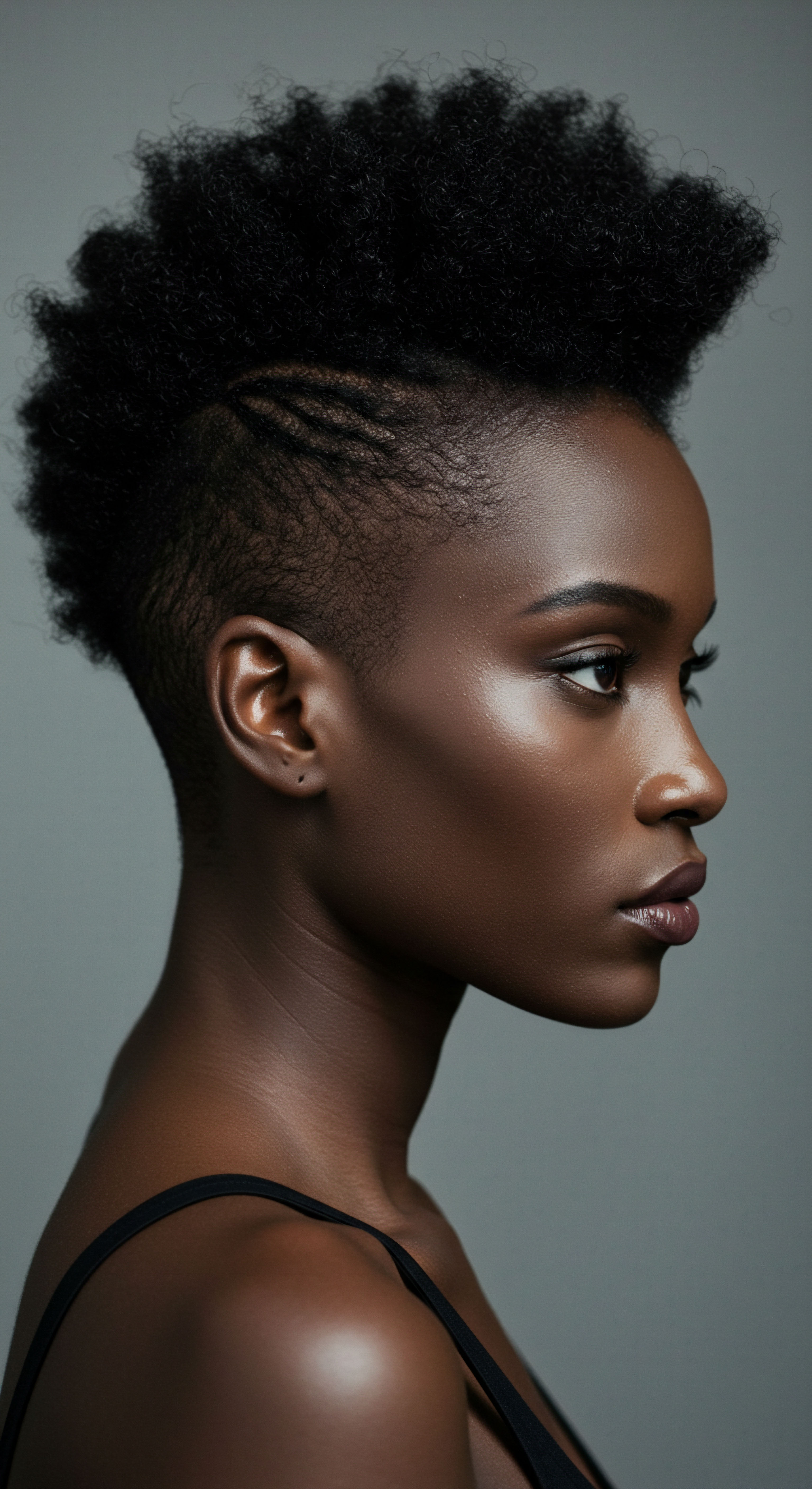
Relay
Beyond the simple acts of covering and oiling, the true depth of how ancient Roman women protected their elaborate hairstyles at night reveals a sophisticated interplay of social imperatives, practical ingenuity, and the underlying physics of hair. This was not merely about convenience; it was about maintaining a societal presentation that was intrinsically linked to one’s standing. To understand this nocturnal preservation fully, we must consider the structural mechanics of these styles, the materials available, and the social economy that permitted such elaborate daily grooming.
The monumental hairstyles seen on Roman busts, particularly those from the Flavian and Antonine periods, often appear almost impossible to maintain, let alone sleep on. Yet, historical research and experimental archaeology demonstrate that these coiffures were indeed authentic and wearable. The secret lay in their construction ❉ layers of natural hair, sometimes supplemented with wigs or hairpieces, were meticulously curled, braided, and then secured with an array of pins and even by sewing hair into place with needle and thread. This structural integrity, built during the day, was the primary defense against nocturnal disarray.

What Was the Structural Integrity of Roman Hairstyles?
The elaborate Roman coiffures were engineering feats. They were not simply loose curls or haphazard buns; they were carefully constructed sculptures of hair. This architectural approach meant that many elements of the style were locked into place, making them surprisingly resilient. Consider the following structural components:
- Braiding and Coiling ❉ Many styles incorporated extensive braiding, which naturally holds hair together and resists tangling. These braids were then coiled and pinned to form complex shapes.
- Hairpins as Anchors ❉ Roman hairpins, made of bone, bronze, or other materials, were inserted strategically to anchor sections of hair. Unlike modern bobby pins, some of these were more akin to bodkins, designed to pierce through dense hair formations and provide substantial support. Their effectiveness depended on the hair being tightly twisted and coiled to create enough isometric tension to trap the pin.
- Sewn-In Sections ❉ Perhaps one of the most fascinating aspects of Roman hairdressing, and a testament to its complexity, was the practice of literally sewing hair into place using needle and thread. This technique would have provided an unparalleled level of security for the most elaborate updos, effectively creating a semi-permanent structure that could withstand considerable movement, including sleep. This method, documented by scholars like Janet Stephens, suggests a shift from simpler tying methods like vittae to more secure stitching, especially with the popularity of styles like the nodus .
This inherent structural stability meant that the goal of nighttime protection was less about preventing total collapse and more about minimizing minor dishevelment, preserving the integrity of curls, and reducing friction that could lead to frizz or damage. The hair was already “set” in a way that modern hair would only achieve with heavy-duty styling products.
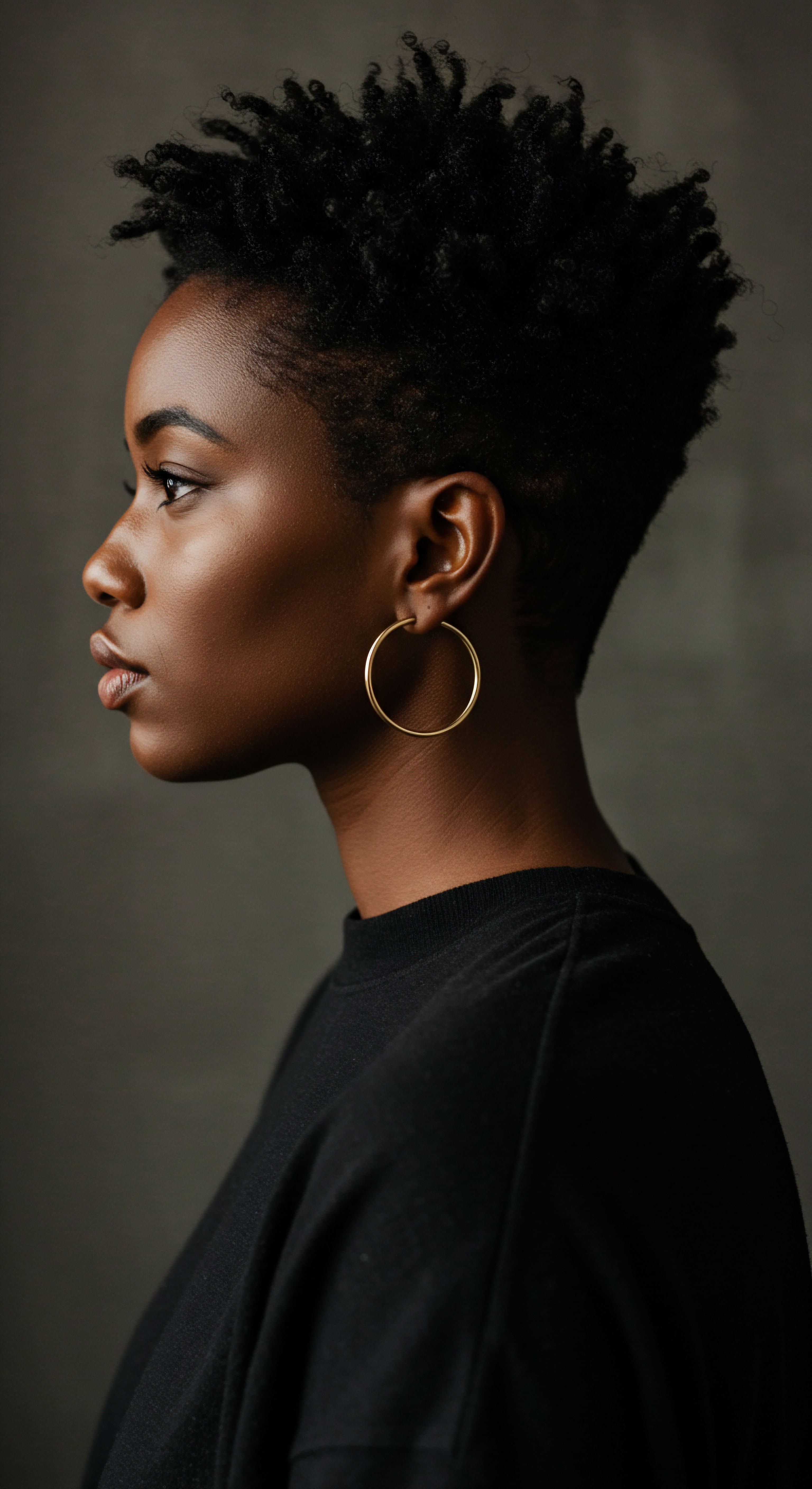
How Did Social Hierarchy Influence Nighttime Hair Practices?
The preservation of these hairstyles was not just a personal matter; it was deeply tied to the social hierarchy of Roman society. Wealthy women had access to a dedicated workforce of enslaved individuals, including the ornatrices, who spent hours styling their mistresses’ hair daily. This availability of labor profoundly shaped the approach to nighttime care.
For an elite Roman woman, the morning ritual would still involve her ornatrix refining and refreshing the style, rather than starting from scratch. Therefore, the nighttime measures were about making the ornatrix’s job easier, not eliminating it entirely.
Consider the economic and social implications ❉ if a hairstyle took several hours to construct, protecting it overnight meant saving valuable time and labor in the morning. This efficiency, in turn, allowed the wealthy woman to maintain her appearance with minimal daily disruption, a subtle display of her privileged position. The less time spent rebuilding a coiffure from scratch, the more leisure time or time for other pursuits remained. This stands in stark contrast to women of lower social standing, whose simpler hairstyles required less maintenance and likely less elaborate nighttime protection.
Moreover, the very notion of hair protection at night speaks to the high value placed on female appearance as a marker of social standing and respectability. A disheveled appearance could imply a lack of control, a lapse in cultus —the Roman concept of a woman’s commitment to maintaining her appearance through grooming and hygiene. Thus, even in the privacy of her bedchamber, the Roman woman was, in a sense, upholding her public image.
Roman women preserved their elaborate hairstyles overnight through structural design, meticulous pinning, and even sewing, supported by the societal value placed on appearance and the availability of skilled attendants.
A striking, if unsettling, data point to consider is the use of human hair for wigs and hairpieces. While often sourced from trade (like black hair from India), blonde hair was frequently obtained from Germanic captives, especially in the early Imperial period. This practice highlights a darker aspect of Roman beauty standards, where the pursuit of fashion directly intersected with conquest and subjugation.
The societal demand for elaborate, often voluminous, styles sometimes necessitated the literal acquisition of hair from conquered peoples, demonstrating a willingness to exploit resources, including human ones, to maintain aesthetic ideals. This sheds a harsh light on the true cost of some of these seemingly superficial beauty practices, underpinning the authority and privilege of those who wore such styles.
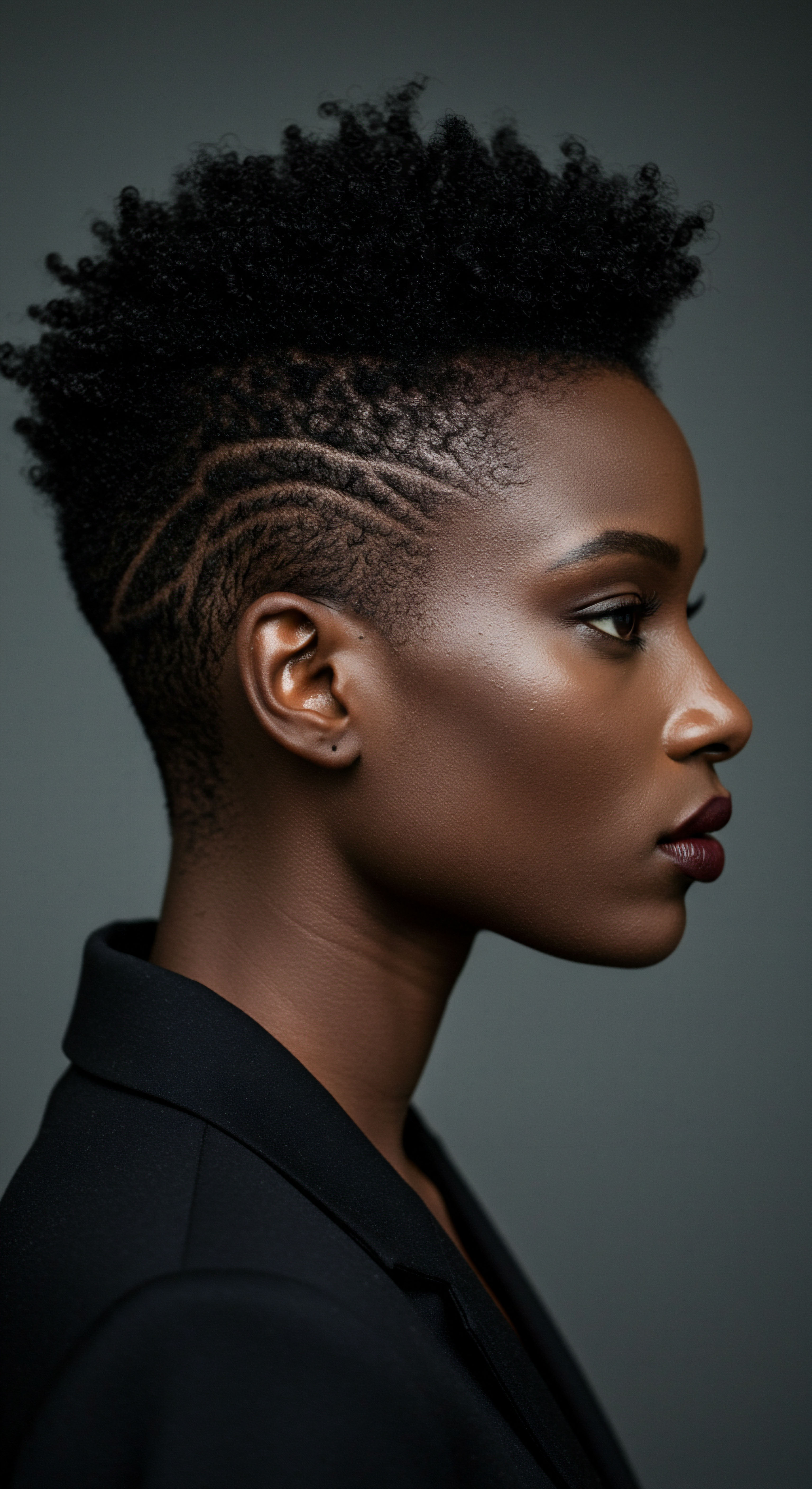
How Did Ancient Hair Practices Align with Modern Hair Science?
Despite lacking modern scientific understanding, many ancient hair care practices, including those for nighttime protection, align with contemporary principles of hair health. The core principles remain remarkably consistent:
- Minimizing Friction ❉ Modern hair care emphasizes silk or satin pillowcases and bonnets to reduce friction and prevent frizz and breakage. The Roman use of scarves and nets, particularly those made of finer materials, served a similar purpose.
- Moisture Retention ❉ Oils like olive oil, widely used in ancient Rome, are still recommended today for their moisturizing properties. They help to seal the cuticle and keep hair hydrated, which is crucial for maintaining curl definition and preventing dryness overnight.
- Protective Styling ❉ Braids and buns are popular protective styles today, minimizing manipulation and exposure to environmental stressors during sleep. The Roman reliance on these structures, secured with pins and even stitching, exemplifies an early form of protective styling.
While the Romans did not have access to synthetic polymers or advanced heat protectants, their practical solutions, born of necessity and observation, often mirrored the underlying goals of modern hair wellness. The elaborate nature of their daytime styles demanded a thoughtful approach to nighttime preservation, one that combined physical barriers with conditioning agents to extend the life of their meticulously crafted coiffures.
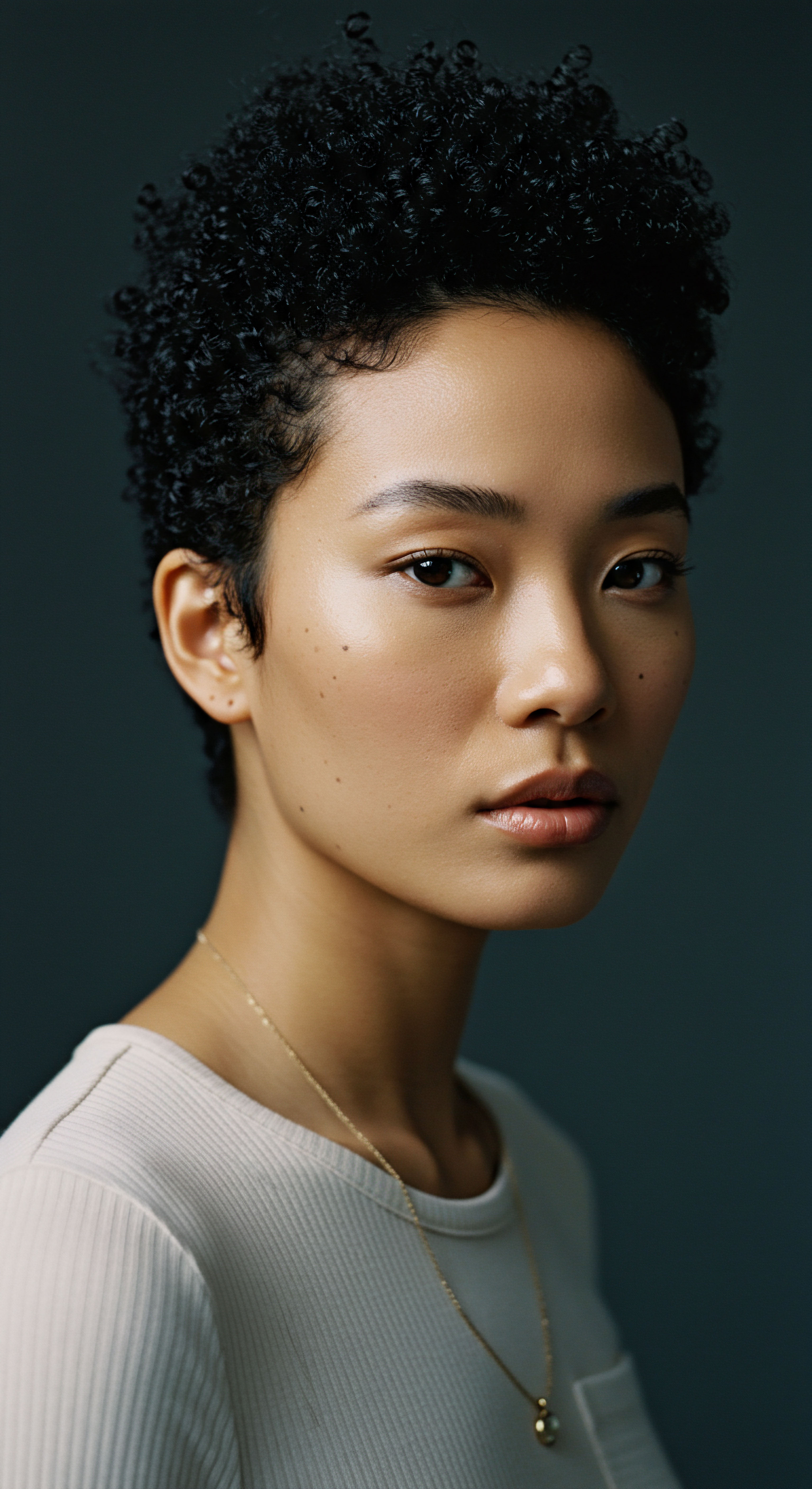
Reflection
The journey through ancient Roman women’s nighttime hair rituals reveals more than just practical solutions to a daily dilemma. It opens a window into a world where appearance was a profound declaration, a meticulously cultivated expression of self and status. The quiet acts of securing a towering coiffure with a delicate net or anointing strands with olive oil speak to a timeless human desire for order, beauty, and the preservation of what we value. It is a reminder that even in the deepest recesses of the night, cultural norms and personal dedication continued their gentle, enduring dance, shaping not just how hair was worn, but how life itself was lived.

References
- Cool, H. E. M. (1983). A Study of the Roman Personal Ornaments Made of Metal, Excluding Brooches, from Southern Britain (Phd Thesis). University of Wales.
- Cool, H. E. M. (1990). “Roman Metal Hair Pins from Southern Britain”. Archaeological Journal, 147, 148-182.
- Crummy, N. (1983). Colchester Archaeological Report 2 ❉ The Roman Small Finds from Excavations in Colchester 1971-9. Colchester Archaeological Trust.
- Henig, M. (1977). “Bone Hairpins”. In J. Munby & M. Henig (Eds.), Roman Finds from the Civitas Capital of Corinium Dobunnorum. Transactions of the Bristol and Gloucestershire Archaeological Society, 95, 359.
- Olson, K. (2008). Dress and the Roman Woman ❉ Self-Presentation and Society. University of Texas Press.
- Olson, K. (2012). Masculinity and Dress in Roman Antiquity. Indiana University Press.
- Stephens, J. (2008). “Ancient Roman Hairdressing ❉ On (Hair)Pins and Needles”. Journal of Roman Archaeology, 21, 115-133.
- Suetonius. (1913). The Lives of the Caesars. Loeb Classical Library.
- Ovid. (1990). Ars Amatoria. Harvard University Press.
- Juvenal. (2004). Satires. Oxford University Press.
- Martial. (1993). Epigrams. Oxford University Press.